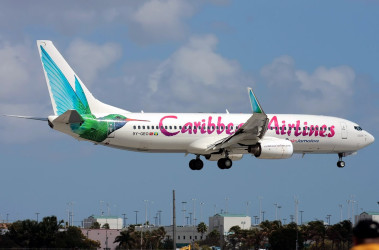Against the backdrop of patently futile measures on the part of the regional airline industry to reduce losses and increase market share, a study undertaken by the Caribbean Development Bank (CDB)—the outcomes of which were made public in May—is advocating a raft of corrective measures that seek to halt the sustained slide of the industry.
Perhaps the key recommendation of the study titled ‘Making Air Transport Work Better for the Caribbean’ was that there be a significantly enhanced level of cooperation among regional governments and carriers as well as with extra-regional carriers, though, equally critically, the study calls for a harmonization of administrative and operational policies among carriers in the region.
Less than adequate market share, high operating costs including fuel costs, inadequate Information and Communication Technology (ICT) systems, industrial relations issues, competition from foreign carriers and high taxes and charges were found to be some of the impediments to the growth of the sector.

The CDB study which undertook an examination of the history and contemporary structure of the regional air transport sector, particularly the performance of the state-owned airlines: Caribbean Airlines; LIAT; Surinam Airways; Bahamasair; and Cayman Airways – and undertaken between the last quarter of 2014 and March 2015, proffered a candid view of what it clearly regards as the dire circumstances of the industry. It found, among other things, that regional airlines were consistently recording unsustainable losses with aggregate accumulated losses for Caribbean Airlines, LIAT and Bahamasair estimated at a staggering US$1 billion.
And in what is likely to be seen as a pointed criticism of the prevailing administrative structures governing the operations of the regional airline industry the study calls for the creation of a Caribbean Community (Caricom) Airlines Association to seek out opportunities for cost reduction and revenue increases for the sector. The study also seeks the creation of a regional Air Transport Reform Authority tasked with addressing other strategic issues that might have a bearing on the growth of the sector.
The overall objective of a new aviation authority would be to create an enhanced regional air transport sector which is cost effective and properly compliant with global safety regulations. The Authority would also be charged with reviewing the connectivity needs of the region with a view to integrating network schedules. A detailed regional aviation plan that embraces airlines and airports is expected to emerge from these initiatives.
The study, meanwhile, is also recommending reforms to airlines’ governances structures, reforms to mechanisms concerned with appointments and compensation in the sector; the independence of boards. On the operational side it seeks, among other things, greater use of hubbing to lower unit costs and increase connectivity and clearer rules on route revenue guarantees.





